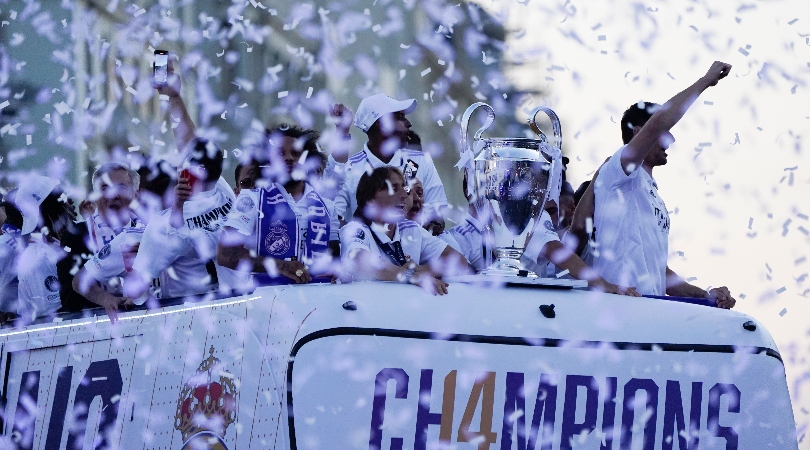
It might not be as popular as red for football shirts, but many teams throughout the world play in white.
White is associated with purity, with an impeccable image – even if no team can lay claim to an angelic identity on or off the pitch.
Nevertheless, there is something impressive about a sparkling white shirt – an all-white strip in particular. It looks clean, classy.
From national sides to top clubs, a look at some of the most famous football teams that wear white...
32. Swansea City

Swansea City were founded in 1912 and the Welsh club have worn white shirts throughout their history, usually with white shorts as well.
Home kits have featured red, orange or black detail over the years, with black shorts at times and socks largely black or white. Recently, kits have been all white. The club is nicknamed The Swans, after all.
31. Derby County
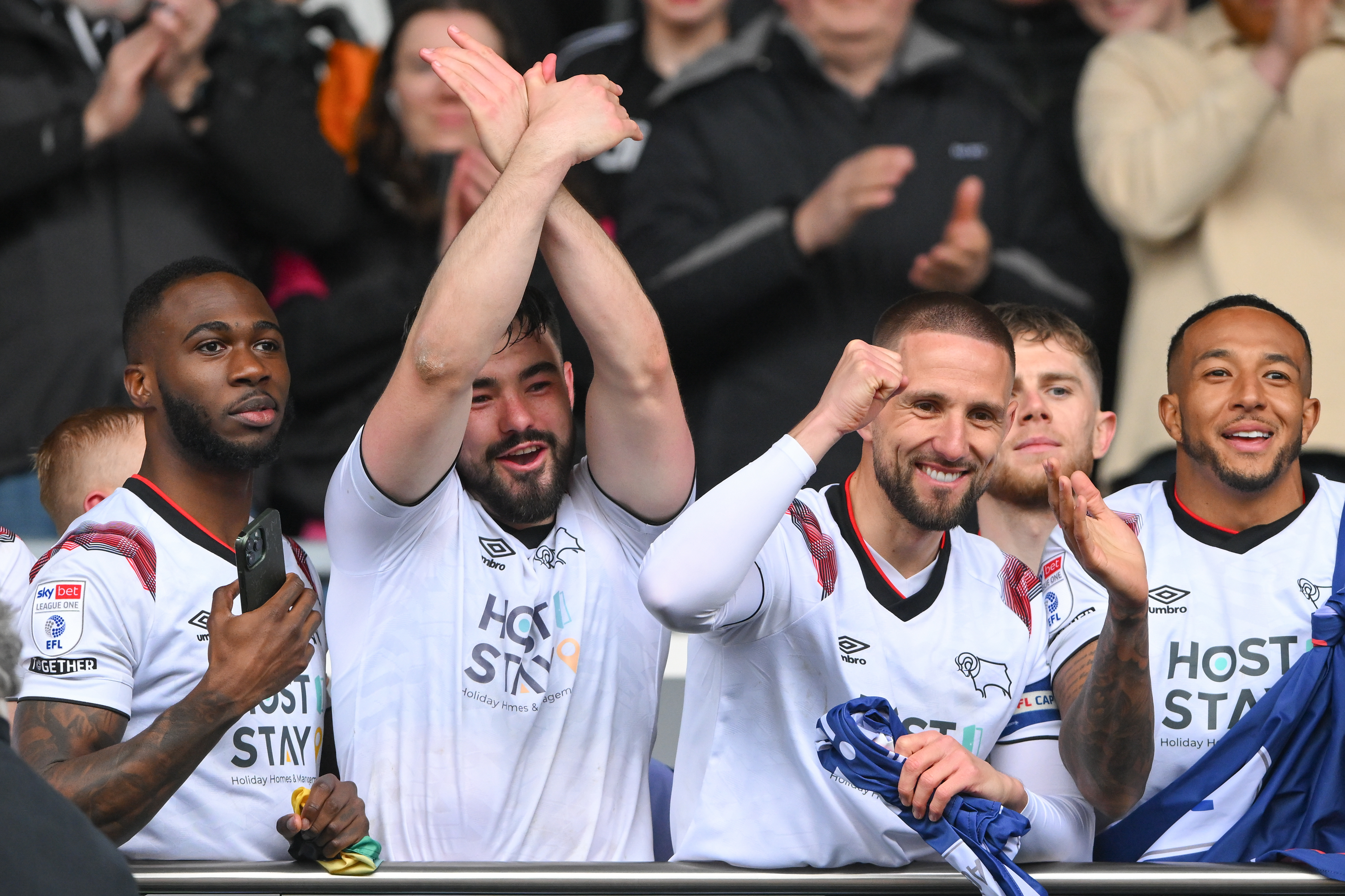
Founded in 1884, Derby County were one of the 12 founder members of the Football League in 1888 and later won it twice – in 1971/72 and 1974/75.
Derby's original colours were amber, chocolate and blue, but the Rams have mostly worn their traditional white shirts and black shorts since the 1890s. Blue shorts were used in the 1970s and 1980s, but those have been black since 1989. Socks have either been white or black since then.
30. Colo-Colo
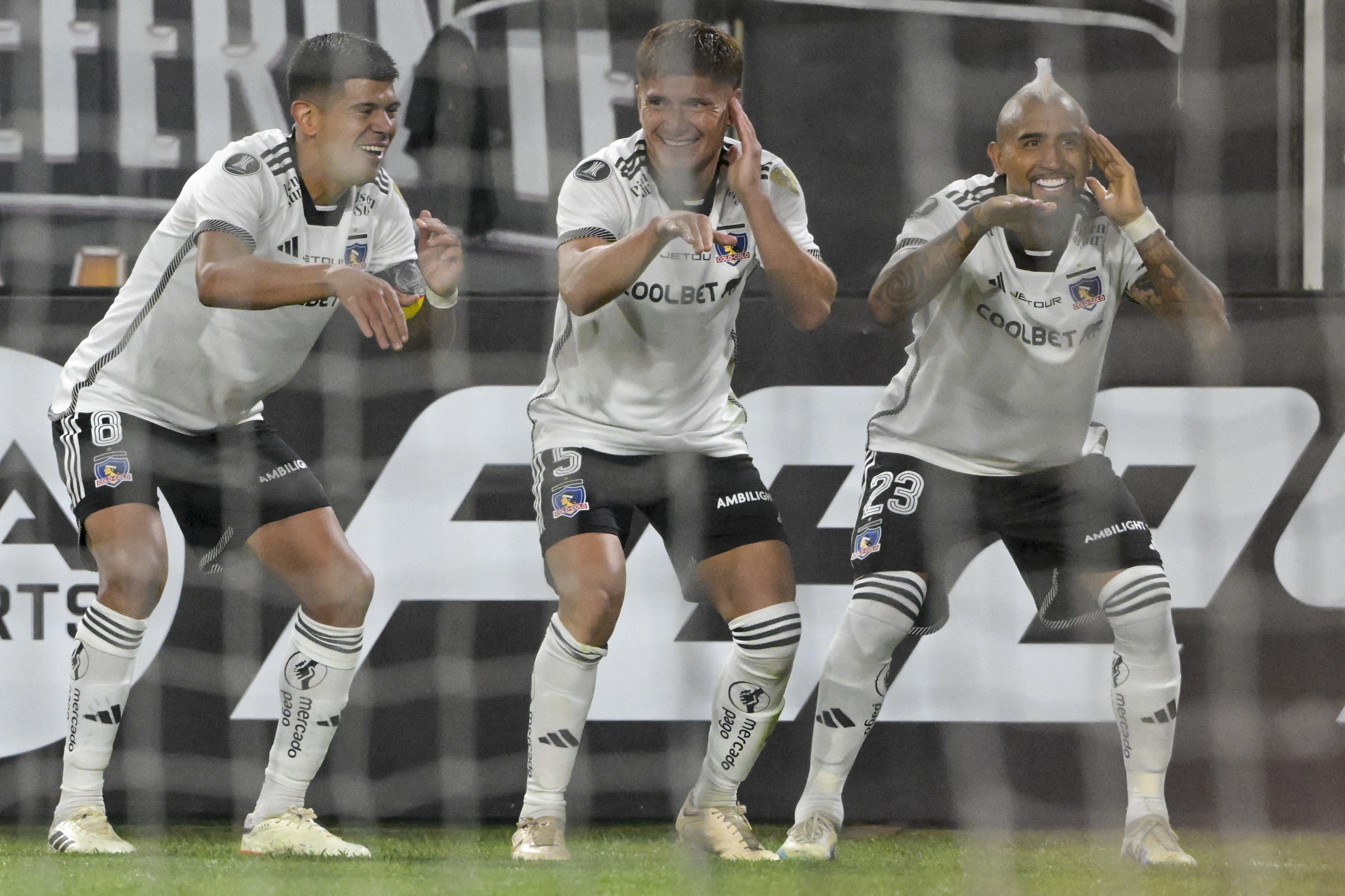
With over 30 league championship titles, Colo-Colo are Chile's most successful football club. And in 1991, the Santiago-based side became the first Chilean club to win the Copa Libertadores.
Founded in 1925, Colo-Colo have worn white shirts and black shorts throughout their history and one of their nicknames is Los Albos (the Whites).
29. Velez Sarsfield
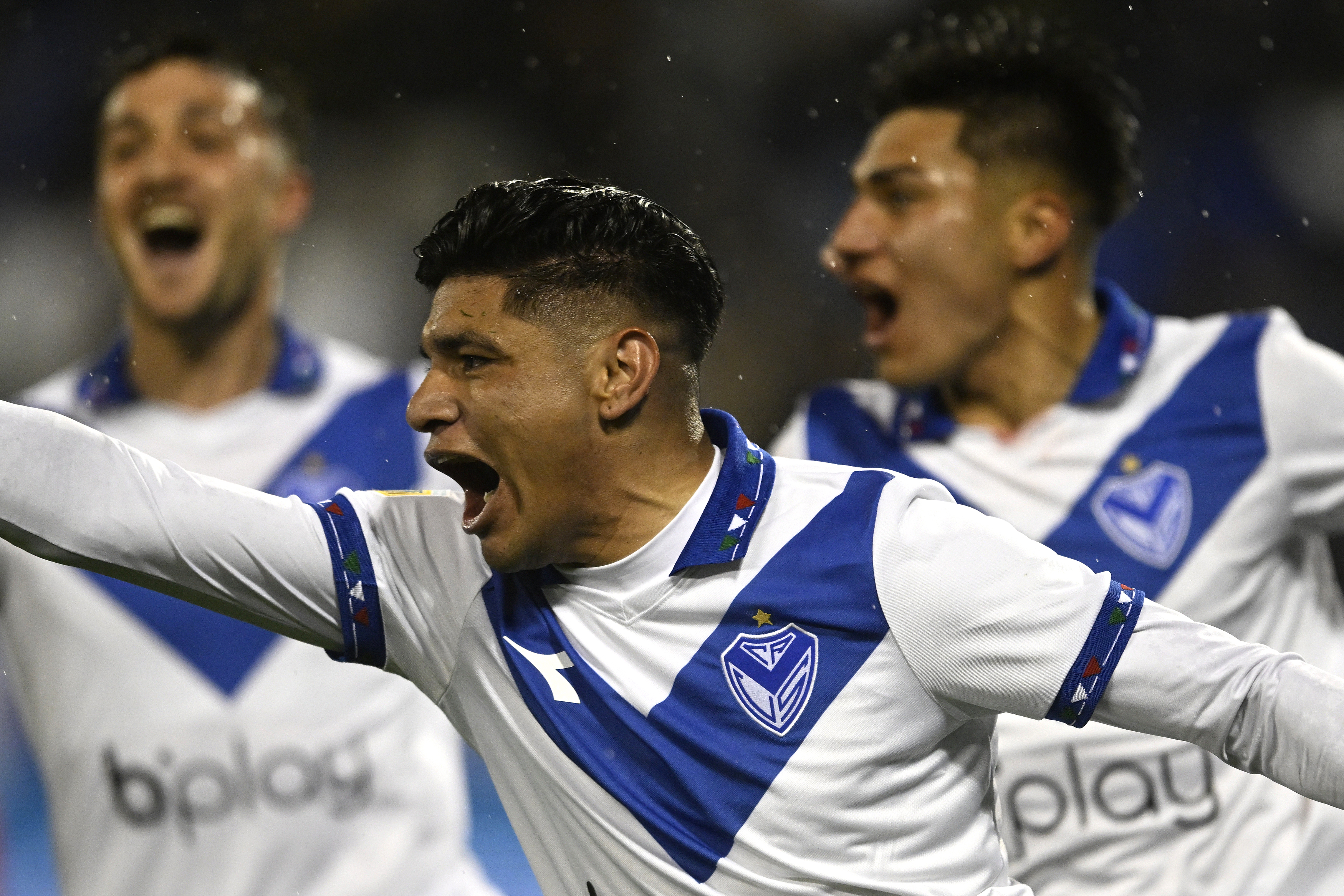
Velez Sarsfield are one of Argentina's most decorated clubs and the Buenos Aires-based side also enjoyed continental success in the 1990s, winning the Copa Libertadores in 1994.
Founded in 1910, Velez originally played in white shirts and shorts with grey socks. Since 1933, the club has worn an all-white strip with a blue V on the chest, which is said to be because they were offered a set of jerseys at a low price which had previously been commissioned by a rugby team.
28. Bolton Wanderers
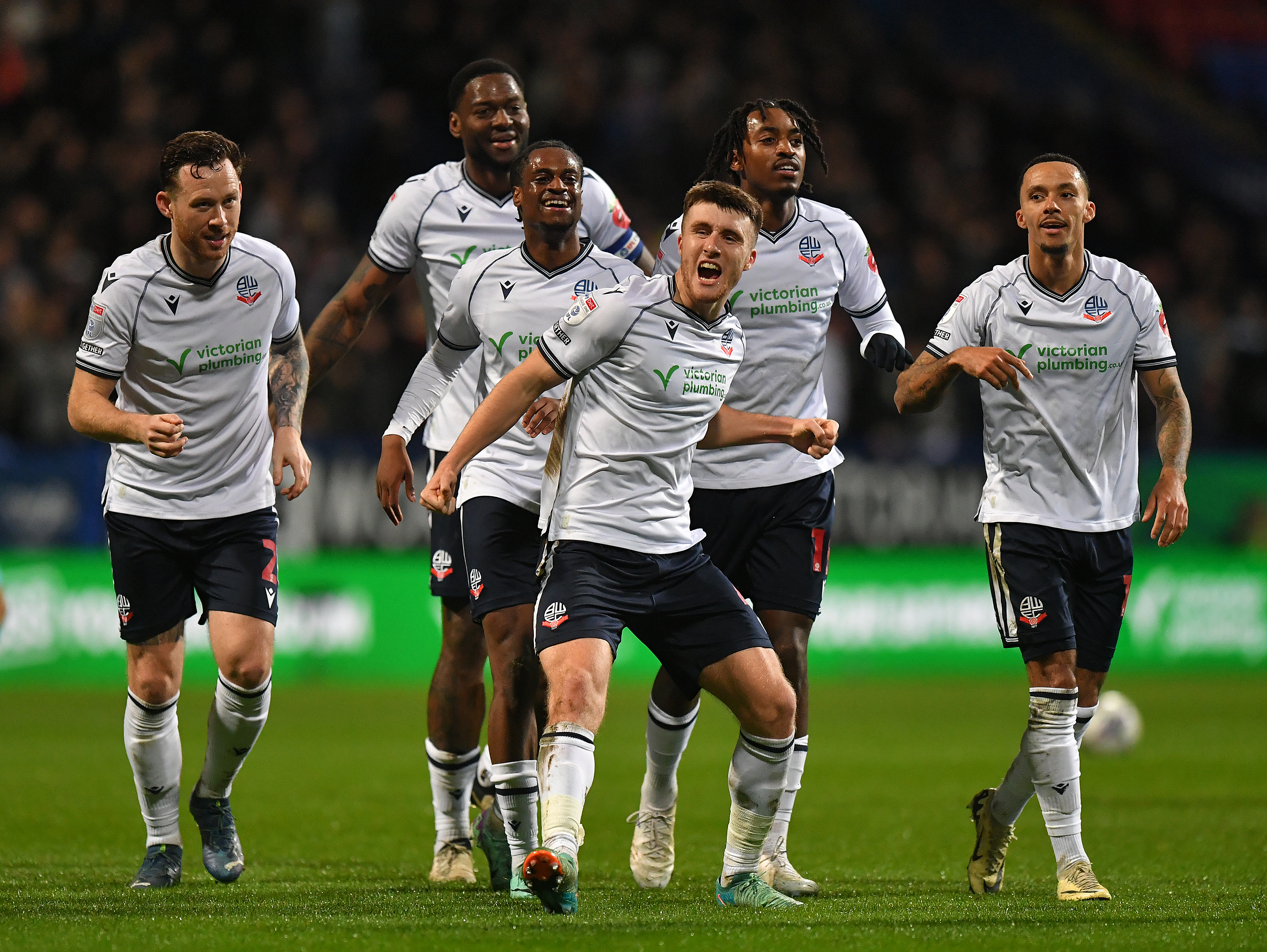
One of England's oldest professional clubs, Bolton Wanderers were founded in 1874 and won four FA Cups between 1923 and 1958.
Sometimes referred to as the Whites, Bolton have worn white shirts since 1892, having previously used a number of different colours and designs – including red, red and white, white with red spots and royal blue. There have been only minor alterations since, with Bolton wearing white shirts and mostly blue shorts, although occasionally black. The Trotters also played for a few seasons in all-white kits in the 2000s.
27. LA Galaxy

LA Galaxy were formed relatively recently, in 1994, but the Los Angeles club were one of Major League Soccer's founding clubs and made a big splash by bringing David Beckham to MLS in 2007.
After playing in a variety of green, yellow, blue and gold shirts in the 1990s and early 2000s, Galaxy have worn white since 2007, often with a blue or blue and gold "sash" from the left shoulder to the right hip.
26. Fulham

Fulham were founded in 1879 and are London's oldest professional football team. Based at Craven Cottage since 1896 – apart from a two-year spell at QPR's Loftus Road during renovations – Fulham play in white shirts and black shorts.
After experimenting with different colours early on, including a light and dark blue combination, black and white stripes and even a red and white kit, Fulham settled on their current white and black look in 1903. The club's white shirts often feature some black trim or detail on the sleeves or across the chest, occasionally with grey or pinstripe designs. Socks have been mostly white since 1973, after two seasons of red stockings and black or black and white designs previously.
25. Algeria

Algeria won the Africa Cup of Nations in 1990 and 2019 and the North Africans reached the last 16 of the 2014 World Cup, narrowly losing to eventual champions Germany.
The Algerian flag is green and white and the national team, nicknamed the Fennec Foxes, usually play in white shirts and shorts with green trim and white socks. Similarly, their away kits are green with white trim.
24. Auxerre
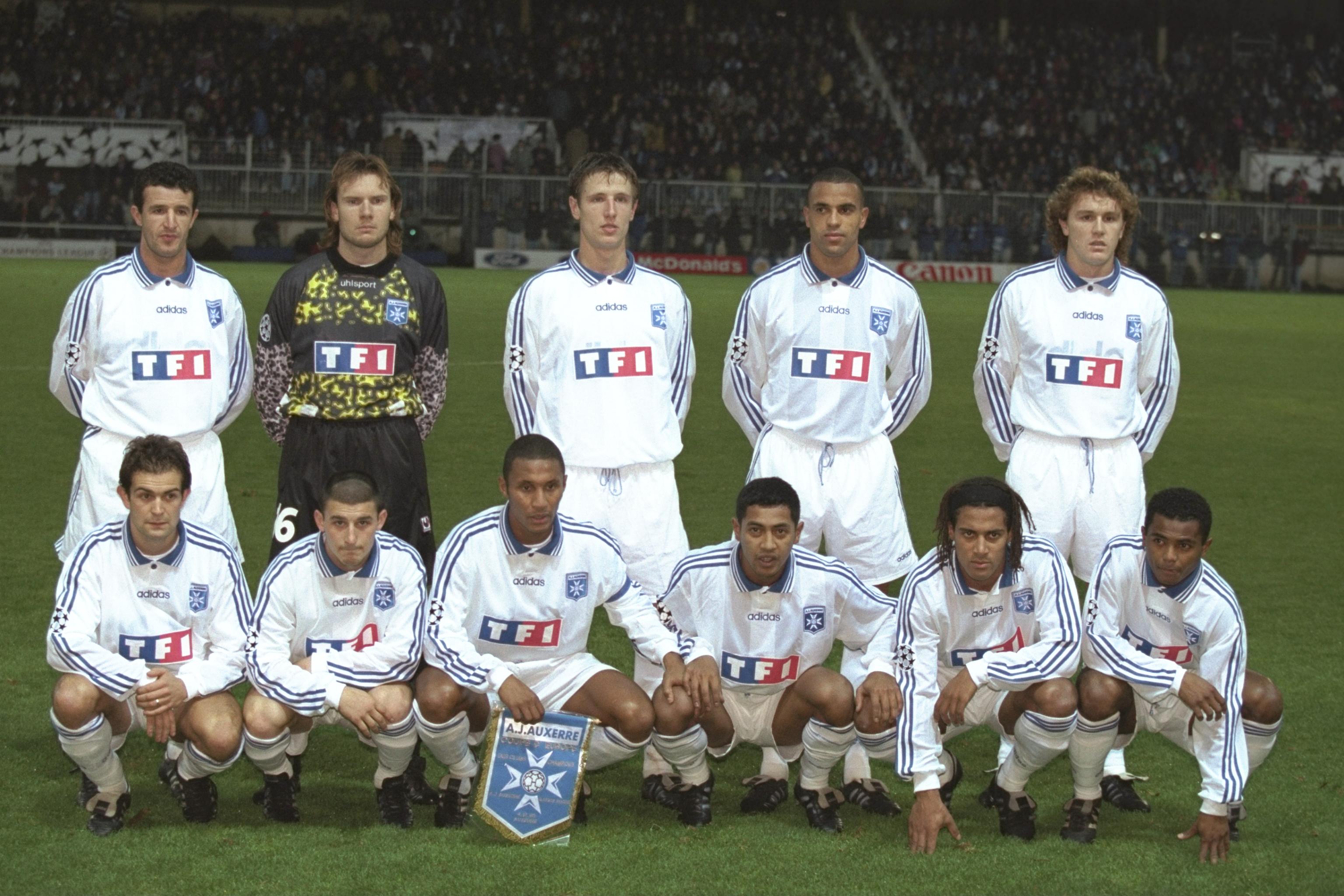
Auxerre won a league and cup double in 1995/96 under legendary manager Guy Roux, a former player who coached the club for over 40 years.
Founded in 1905, Auxerre's colours are white and blue. Home kits have mainly been white, with some blue trim or detail. Shorts and socks are also white.
23. Pumas

Club Universidad Nacional, more commonly known as Pumas de la UNAM or usually just Pumas, are one of Mexico's biggest and best-supported clubs.
Pumas play in iconic shirts with a giant puma on the front since 1975. The Mexico City side have often used gold or navy blue strips in the past, but their home shirt has mostly been white since 1999, with occasional seasons featuring one of the other two colours in that time.
22. Poland
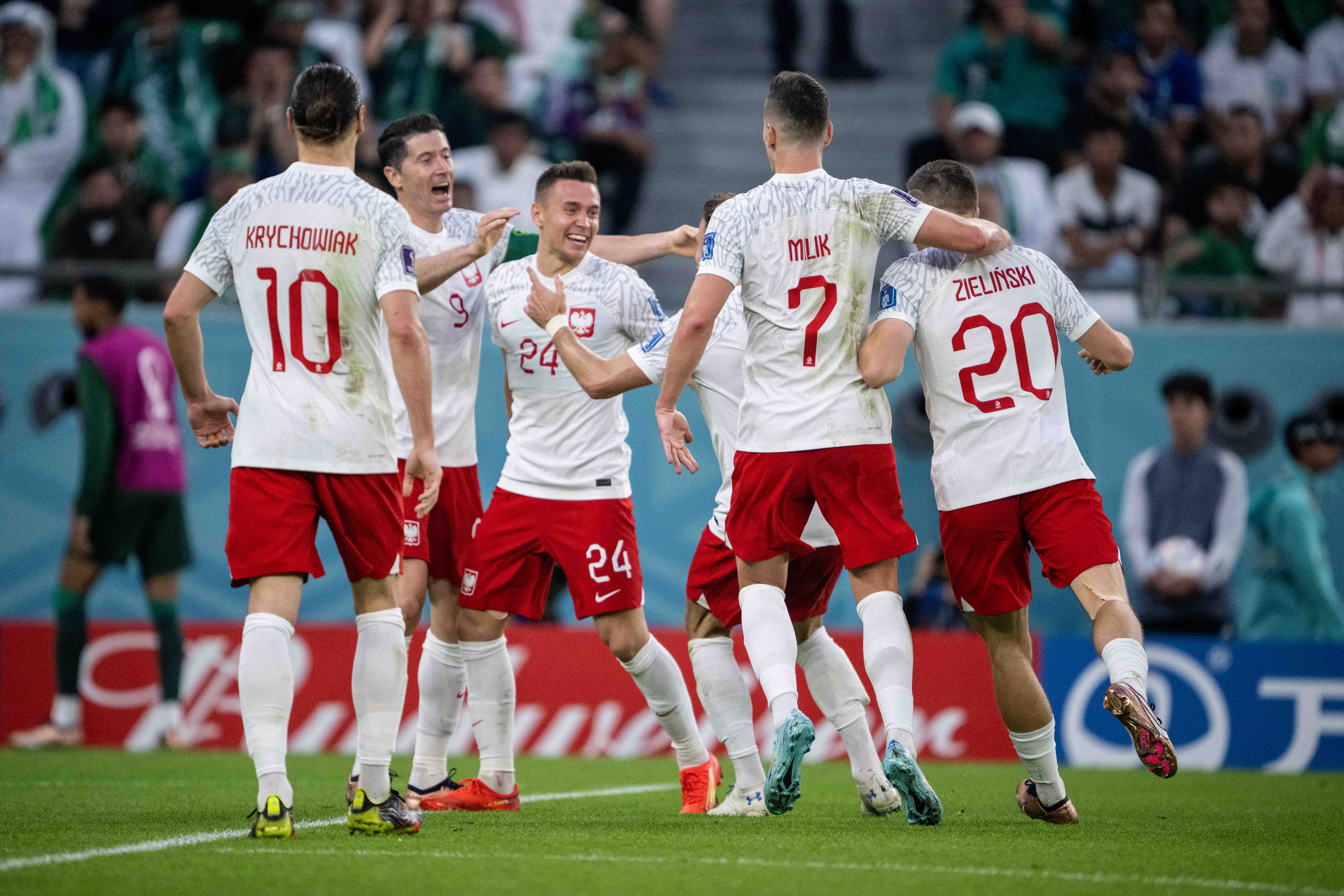
Poland's flag is half white and half red, so it is no surprise that their national football team plays in those colours.
Nicknamed Biało-czerwoni (the White-Reds), Poland's home kit consists of white shirts, red shorts and white socks. It has been largely unaltered since 1920, save for a period with striped socks in 1921. Their away strip is usually either all red or features red shirts with white shorts.
21. Greece
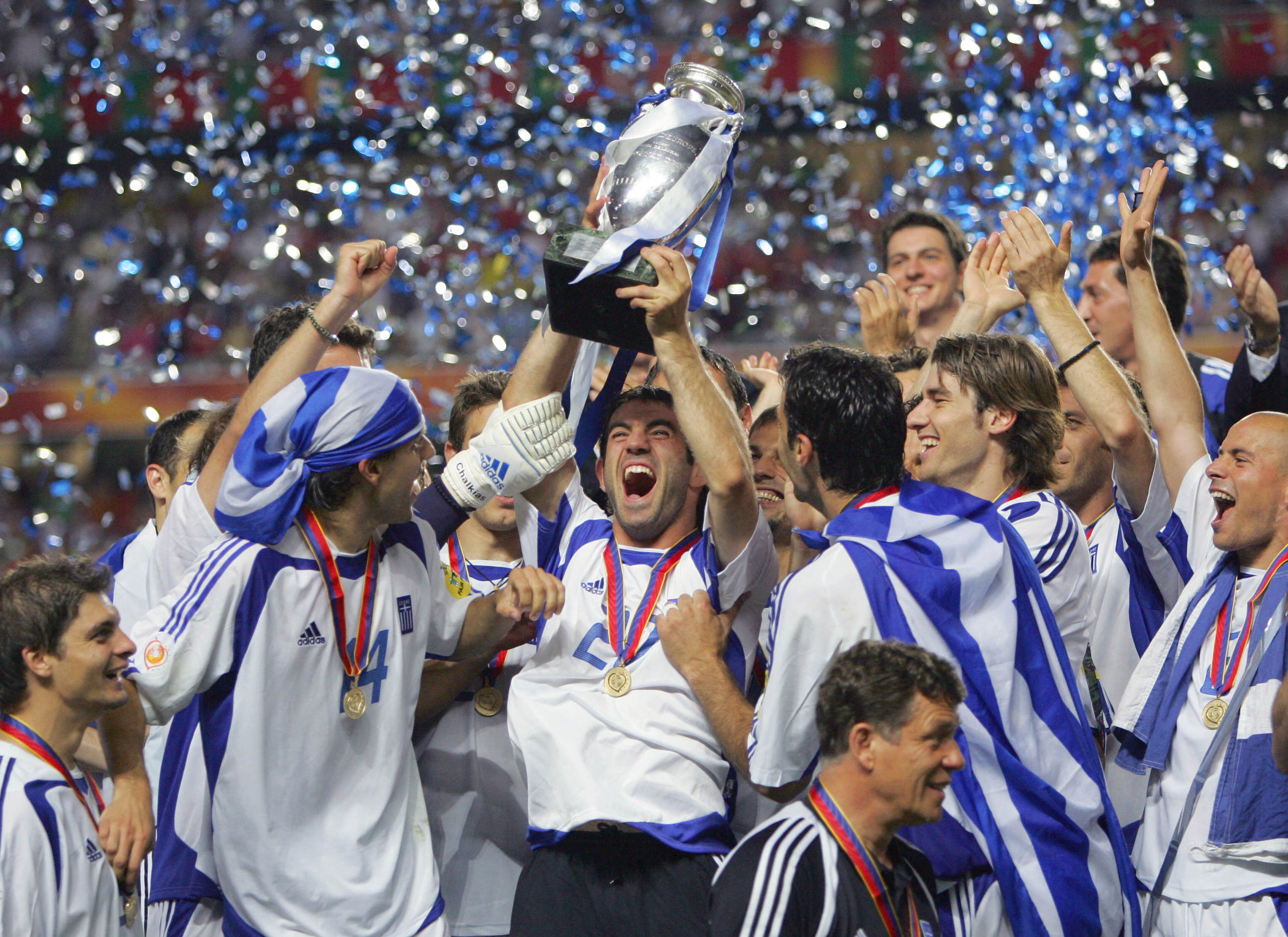
Greece's flag is blue and white and the nation's football team have traditionally worn those colours. Up until 2004, though, the home shirt was mainly blue.
That changed with Greece's triumph at Euro 2004. Wearing white (their away kit), Greece knocked out favourites France and decided to keep that colour against Portugal in the final – despite using blue against the hosts in the group stages. After their historic triumph in the final, the Greeks decided to stick with white and have worn it ever since.
20. Borussia Monchengladbach

Borussia Monchengladbach enjoyed huge success in the 1970s, winning five Bundesliga titles, two UEFA Cups and also reaching a European Cup final.
Gladbach play mainly in white shirts, white shorts and white socks, but their kits often include elements in green and black and sometimes stripes in those colours.
19. Peru

Peru's national colours are red and white and the South Americans' football team is known as La Blanquirroja (the White and Red).
In 1927, Peru wore red and white striped shirts in their first ever kit. But from 1936, the Peruvians have played in their current all-white strip with a red "sash" from the left shoulder to the right hip. In it, La Blanquirroja won the Copa America in 1939, and it has barely been altered since. Iconic.
18. Lyon

Founded in 1899, Olympique Lyonnais are one of France's most successful sides in the modern era, with seven straight Ligue 1 titles between 2002 and 2008.
Lyon's colours are white, red and blue. The club started out in all-white kits. Blue and red chevrons were later added, with blue shorts. The chevrons were eventually replaced by a red and blue horizontal stripe. Between 1976 and 1990, Lyon wore all-red kits like Liverpool, but returned to their traditional all-white strip after that and have used it ever since.
17. Dynamo Kyiv
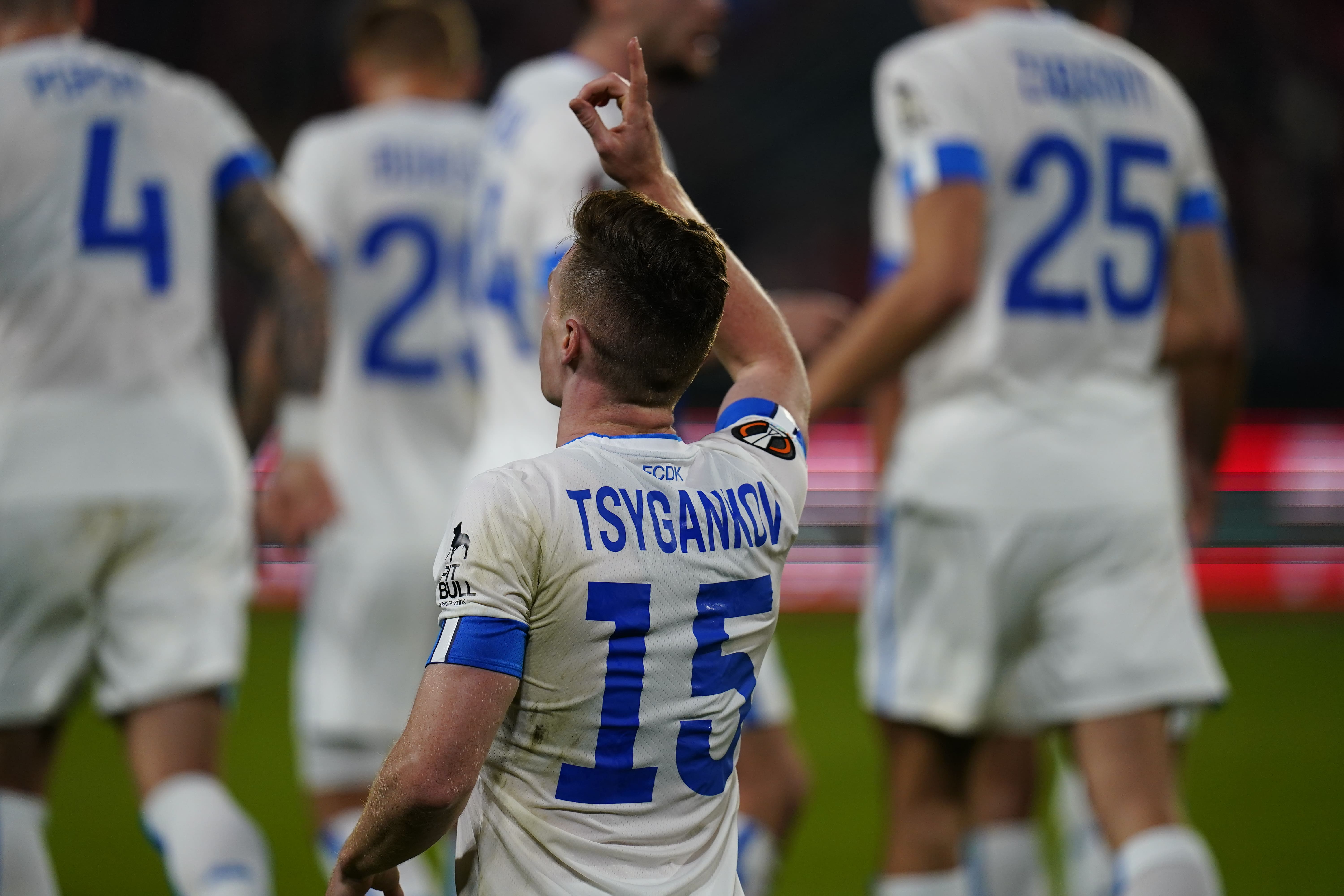
Founded in 1927, Dynamo Kyiv are one of Ukraine's biggest and most successful clubs and two-time winners of the old European Cup Winners' Cup – in 1975 and 1986.
Known as the Blues and Whites, Dynamo wear predominantly white shirts, sometimes featuring a blue "sash", with white shorts and white socks.
16. United States
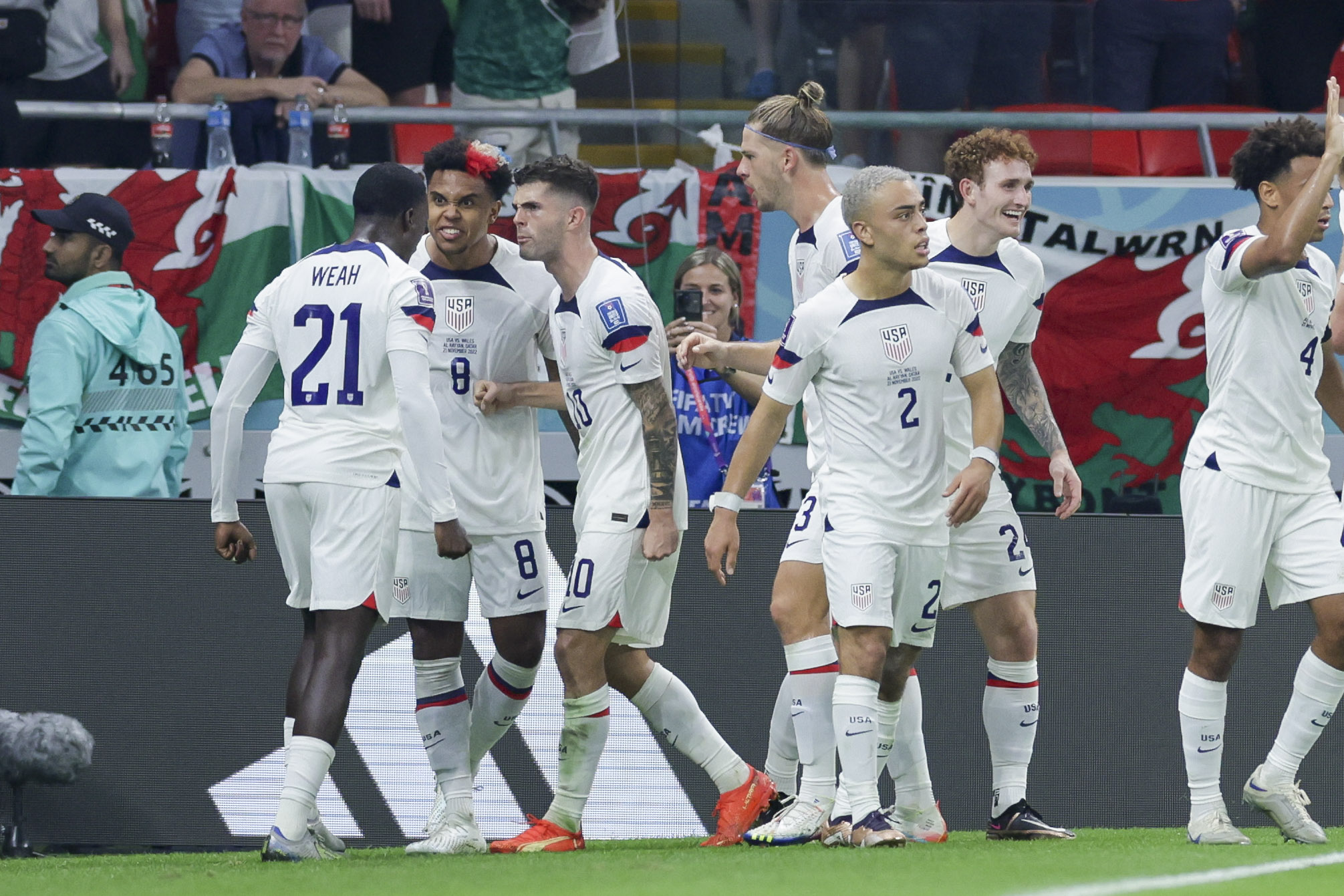
The United States national team played its first ever match in 1885 against Canada and has been wearing white shirts for most of its history, usually with blue shorts.
A red digaonal stripe (like Peru or River Plate) on the home shirts was introduced briefly in 1950, while the U.S. wore red and white stripes with blue shorts for the 1994 World Cup.
15. Leeds United

While most clubs changed colours early on in their history, Leeds United took the unusual step of radically altering their home kit more than 40 years after their foundation.
Leeds started off wearing blue and white stripes like Huddersfield Town. And after using a variety of blue and yellow designs after that, the Yorkshire outfit changed to an all-white kit in 1961 at the behest of manager Don Revie, inspired by the great Real Madrid side of the era.
14. Ghana
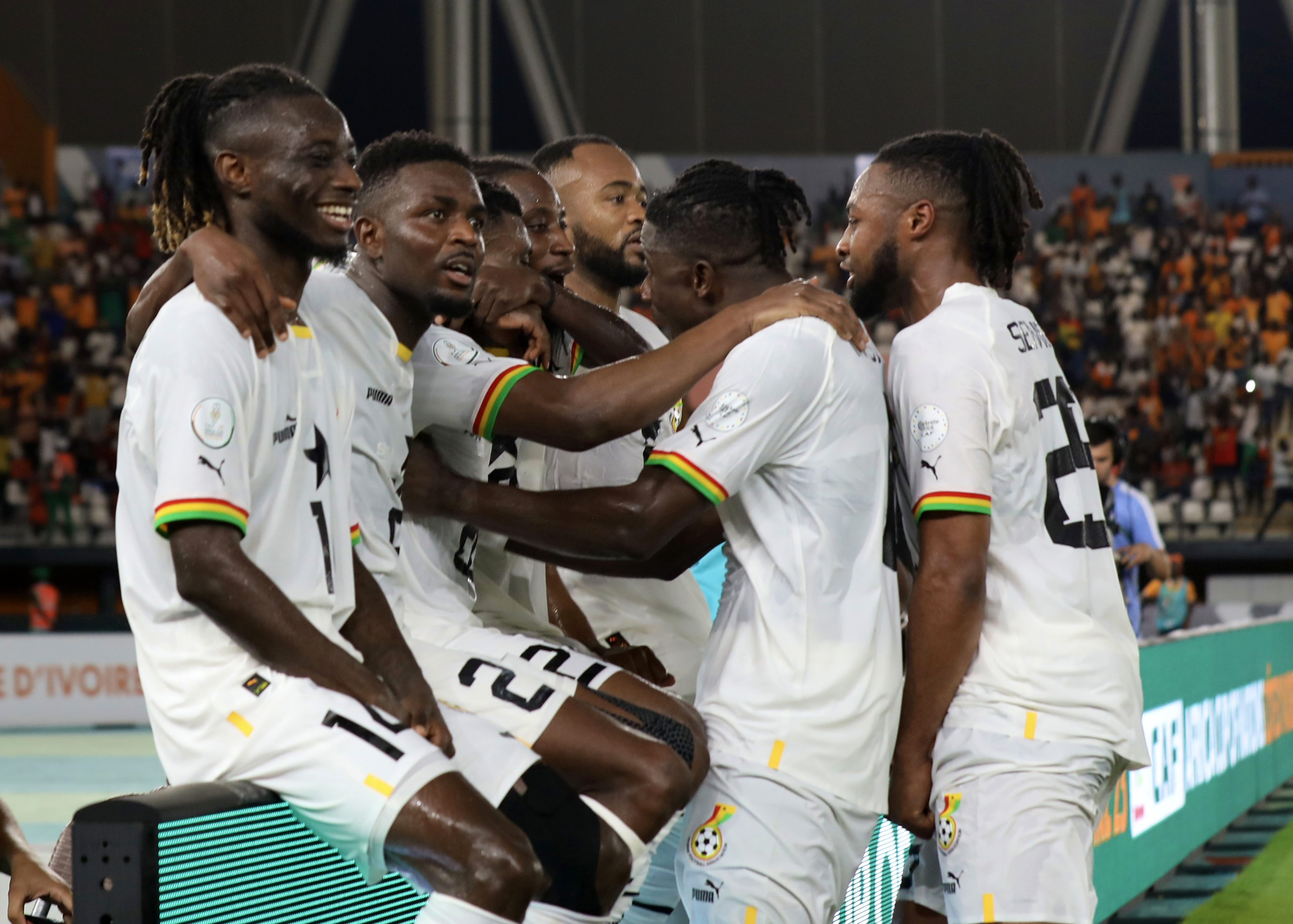
Ghana's football team used the colours of the nation's flag (gold, green and red) from the 1960s and 1970s up until relatively recently, but changed to white kits in 2006.
The Black Stars wear white shirts, shorts and socks these days, often with some of the flag colours or black around the collar or sleeves.
13. Sevilla
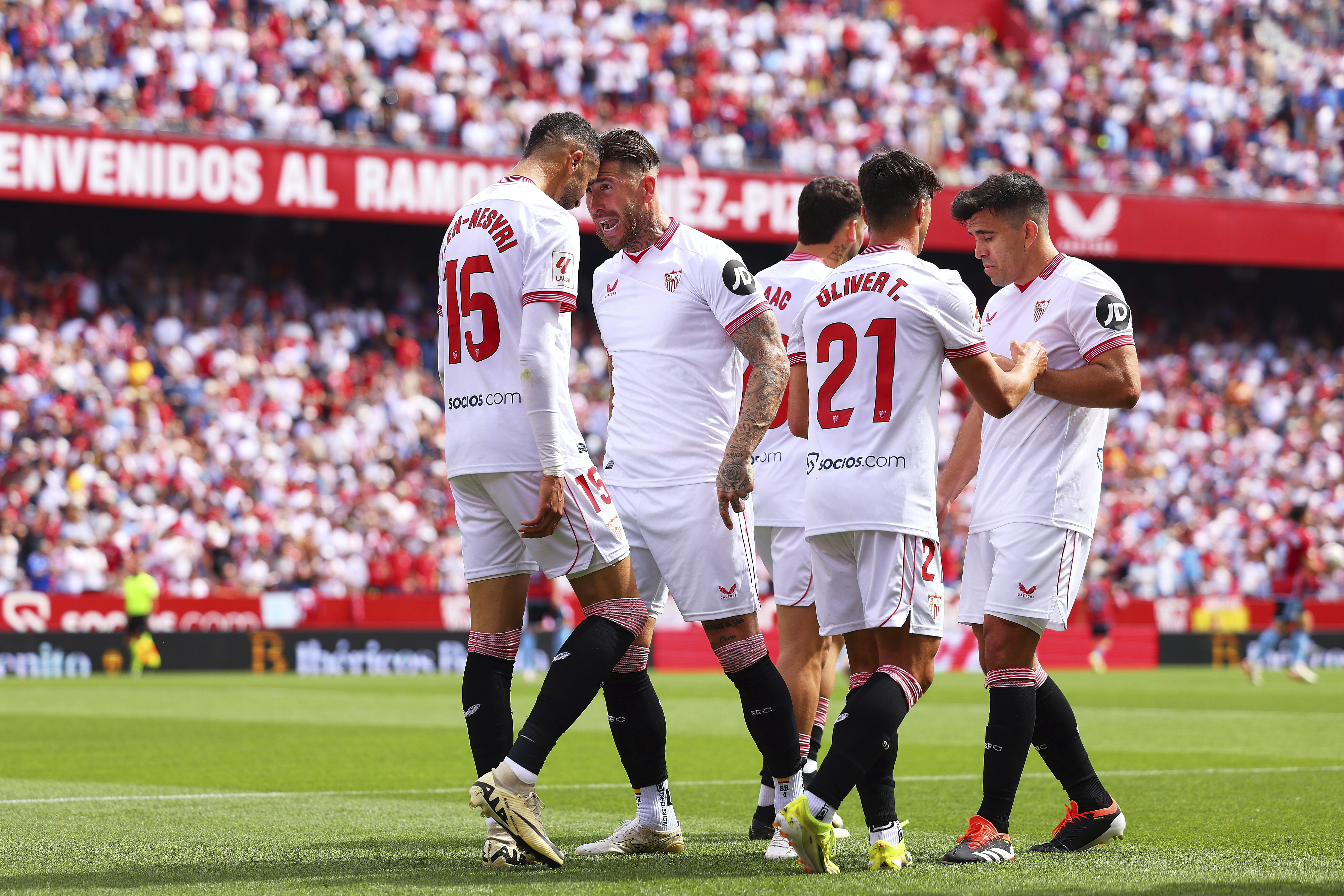
From the club's foundation in 1890 to the present day, Sevilla FC's home kit has remained largely unchanged.
The Andalusian side wear white shirts, usually with some red trim or details, white shorts and black socks. Sevilla changed to an all-white kit in 1957, but black socks returned in the 2000s and the kit hasn't changed much since.
12. Hamburg
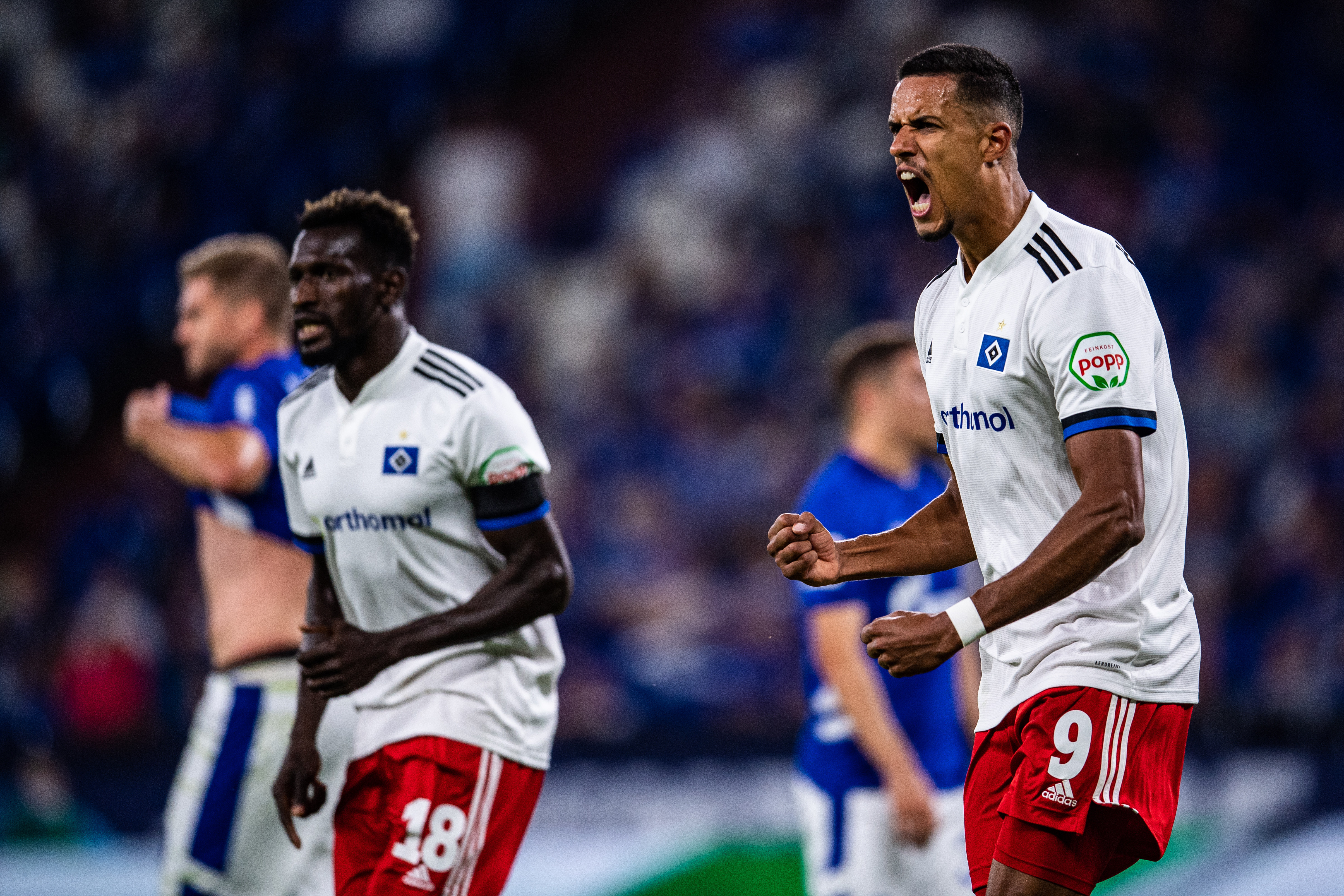
Six-time Bundesliga champions, twice European Cup finalists and winners of the continental competition in 1983, Hamburger SV are one of Germany's oldest and most successful clubs.
Although the club colours are officially blue, white and black, Hamburg play in predominantly white shirts with red shorts. HSV are nicknamed Die Rothosen (the Red Shorts).
11. Santos
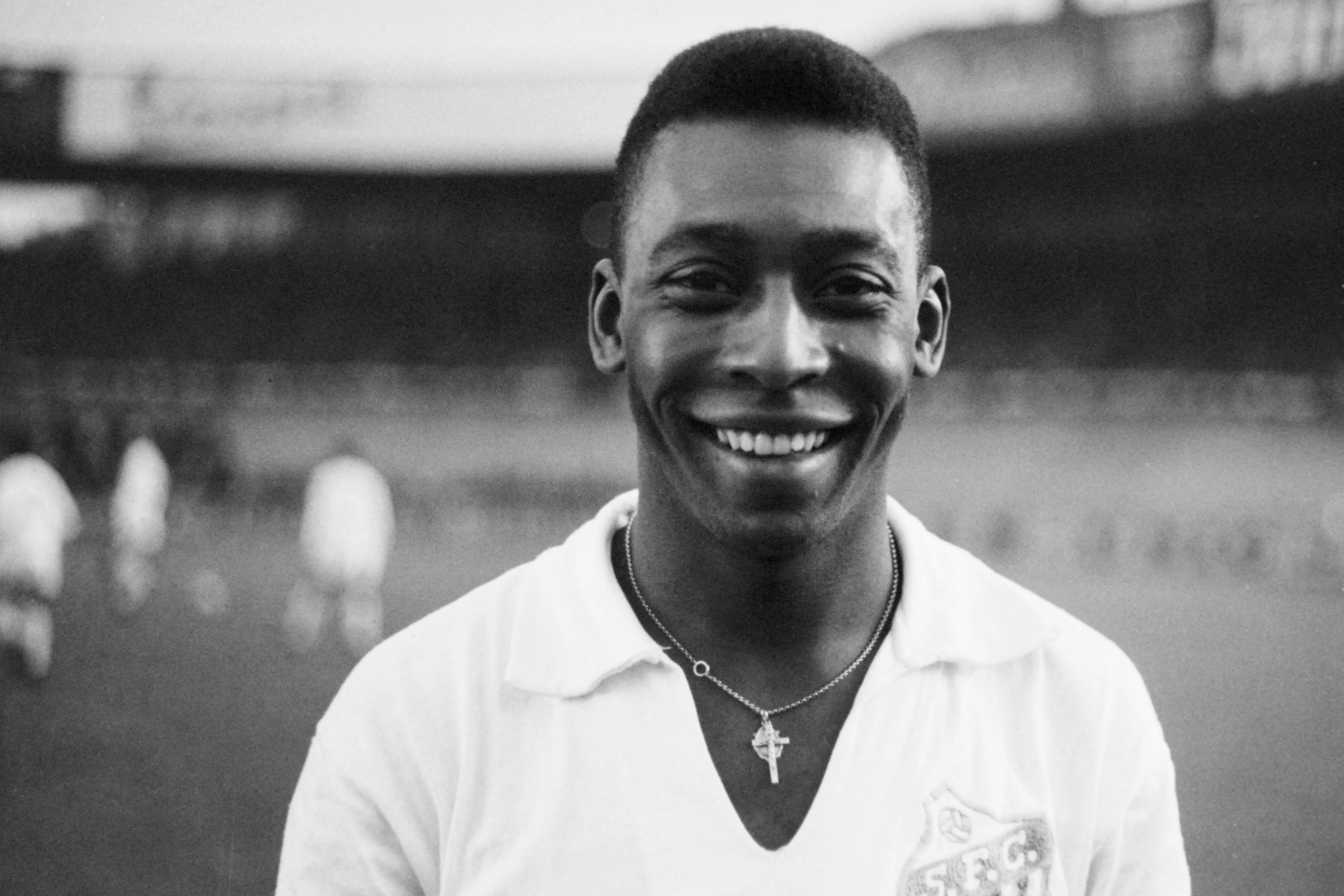
Largely thanks to the genius of Pelé, Santos became one of Brazil's biggest clubs in the 1950s and 1960s, winning a series of domestic and international titles. Later, led by Neymar, the club won a third Copa Libertadores in 2011.
Founded in 1912, Santos have worn all-white kits for most of their history, with black and white striped jerseys used for the club's away strips.
10. River Plate

Founded in 1901, River Plate initially wore white shirts and black shorts and later played for over 20 years in red and white striped jerseys.
But since 1932, the Buenos Aires giants have used white shirts with a diagonal red stripe or "sash" (from the left shoulder to the right hip), most commonly with black shorts and white socks.
9. Sao Paulo

Sao Paulo formed in 1930 when Club Athletico Paulistano and the Associação Atlética das Palmeiras merged and the new club incorporated the colours from both (CA Paulistano wore red and white, AA das Palmeiras black and white).
The three colours also match those on Sao Paulo's state flag and the team is known as the Tricolor Paulista. Their home kit consists of a white shirt, with two horizontal stripes at chest level, one red and one black, with the badge in the centre. Shorts and socks are white.
8. Besiktas
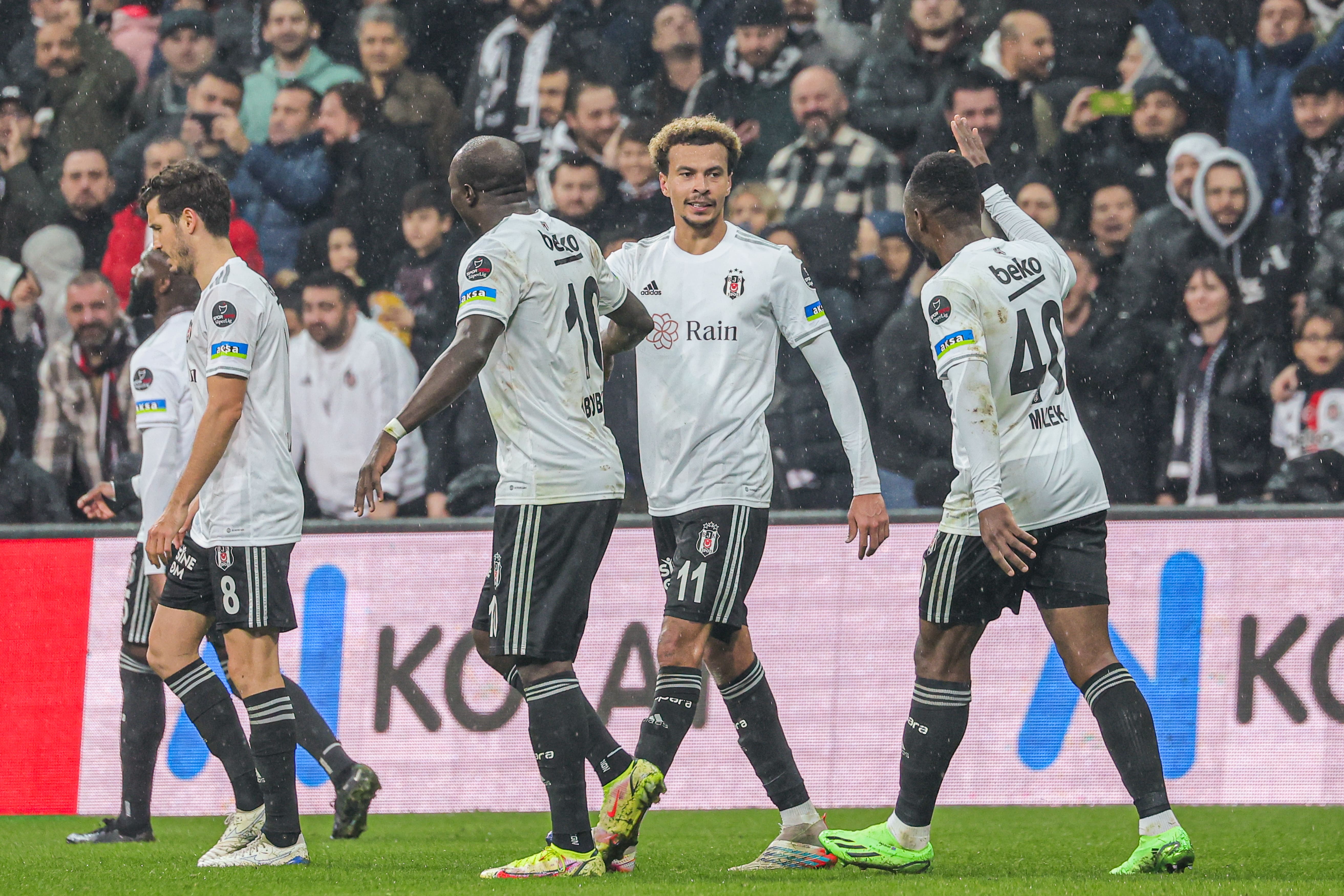
Along with Galatasaray and Fenerbahce, Besiktas are one of Istanbul's "big three" clubs and the trio have completely dominated football in Turkey.
Besiktas' badge is black and white and they have always been associated with those colours, using either white or black (or black and white striped) shirts throughout their history. Most commonly, shirts have been white with some grey or occasionally red detail, and black shorts.
7. Valencia
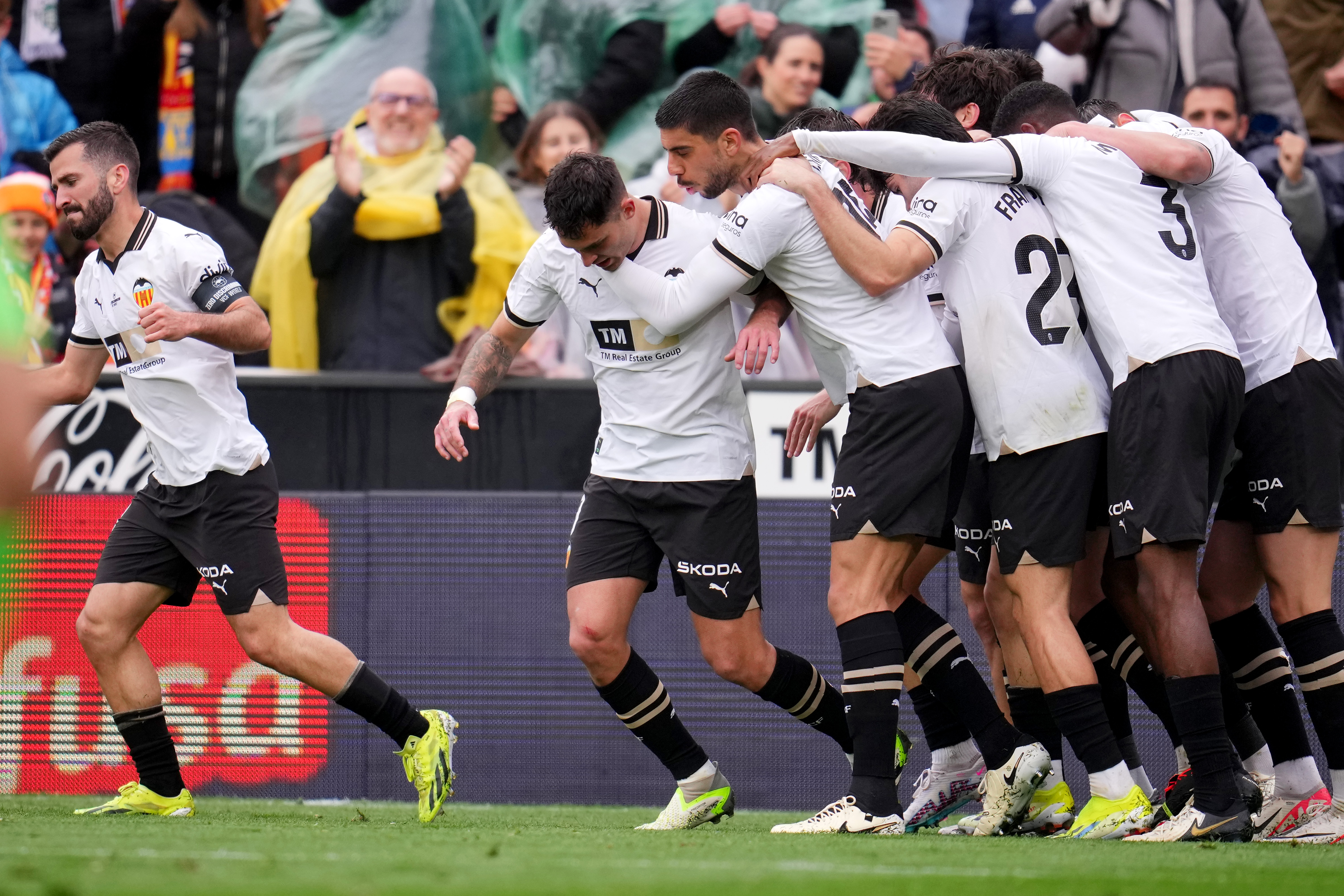
Valencia were not founded until 1919, but there was already a club called FC Valencia in 1905 and that team wore white shirts and navy blue shorts.
In the club statutes, it was determined that Valencia would wear white shirts and shorts, with black socks. There have been variations along the way. Between 1963 and 1984, Valencia wore all white, but the club has used white shirts with black shorts ever since, with either white or black socks.
6. Corinthians
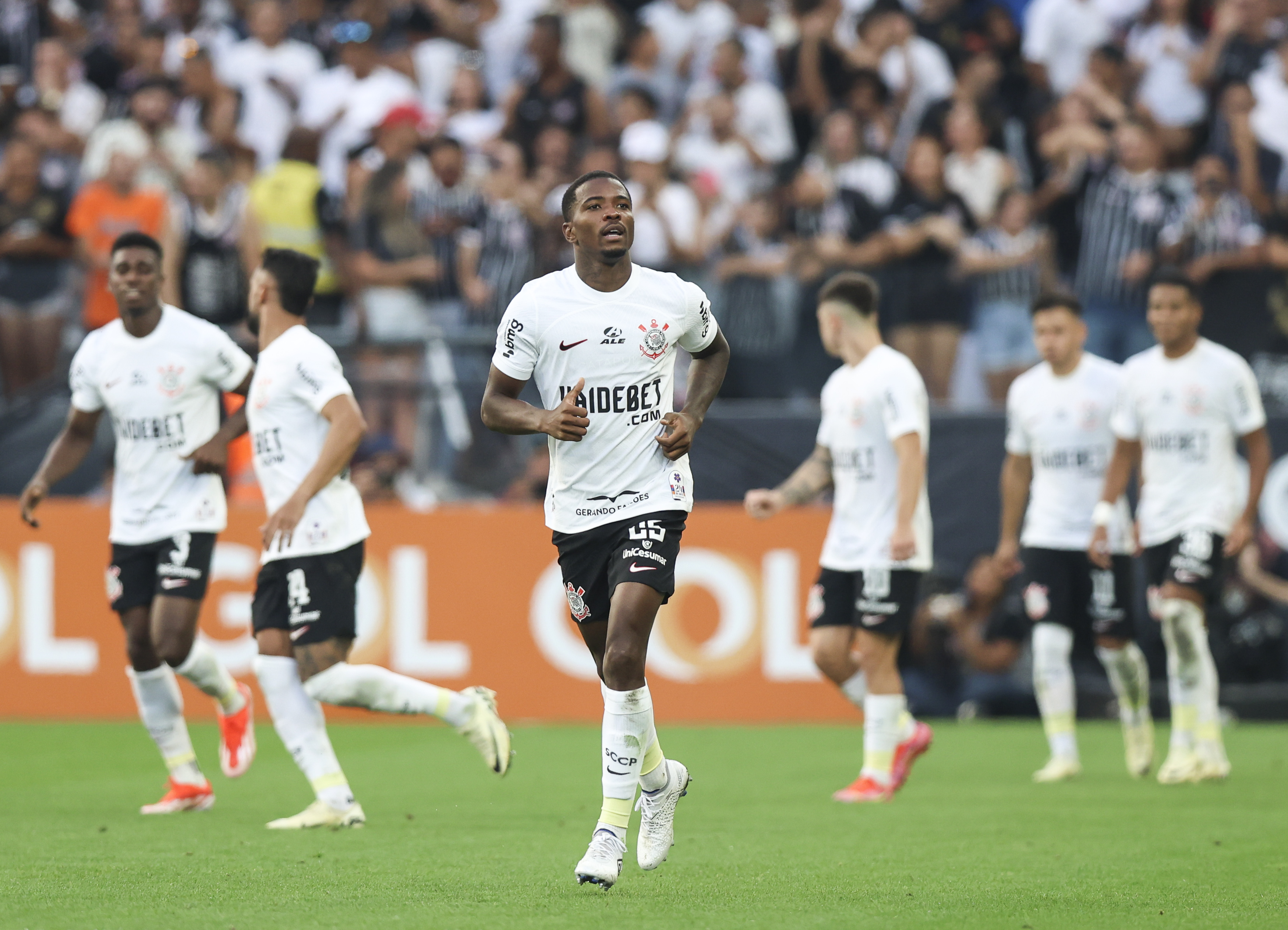
Sport Club Corinthians Paulista, better known as Corinthians, is Brazil's second-most supported club after Flamengo.
Founded in Sao Paulo in 1910, Corinthians took the name of London-based club Corinthian and also adopted the amateur side's white shirts and black shorts after initially wearing cream jerseys.
5. Marseille

One of France's most successful sides and Champions League winners in 1993, Olympique Marseille were founded in 1899 and have worn white and sky blue ever since.
Marseille's first ever shirt was white, featuring the letters OM in light blue on the front. Designs have varied over the years, with different details in sky blue on the white jersey. Marseille also played in blue socks until 1986, but have worn white stockings since then to match the shirt and shorts.
4. Tottenham Hotspur
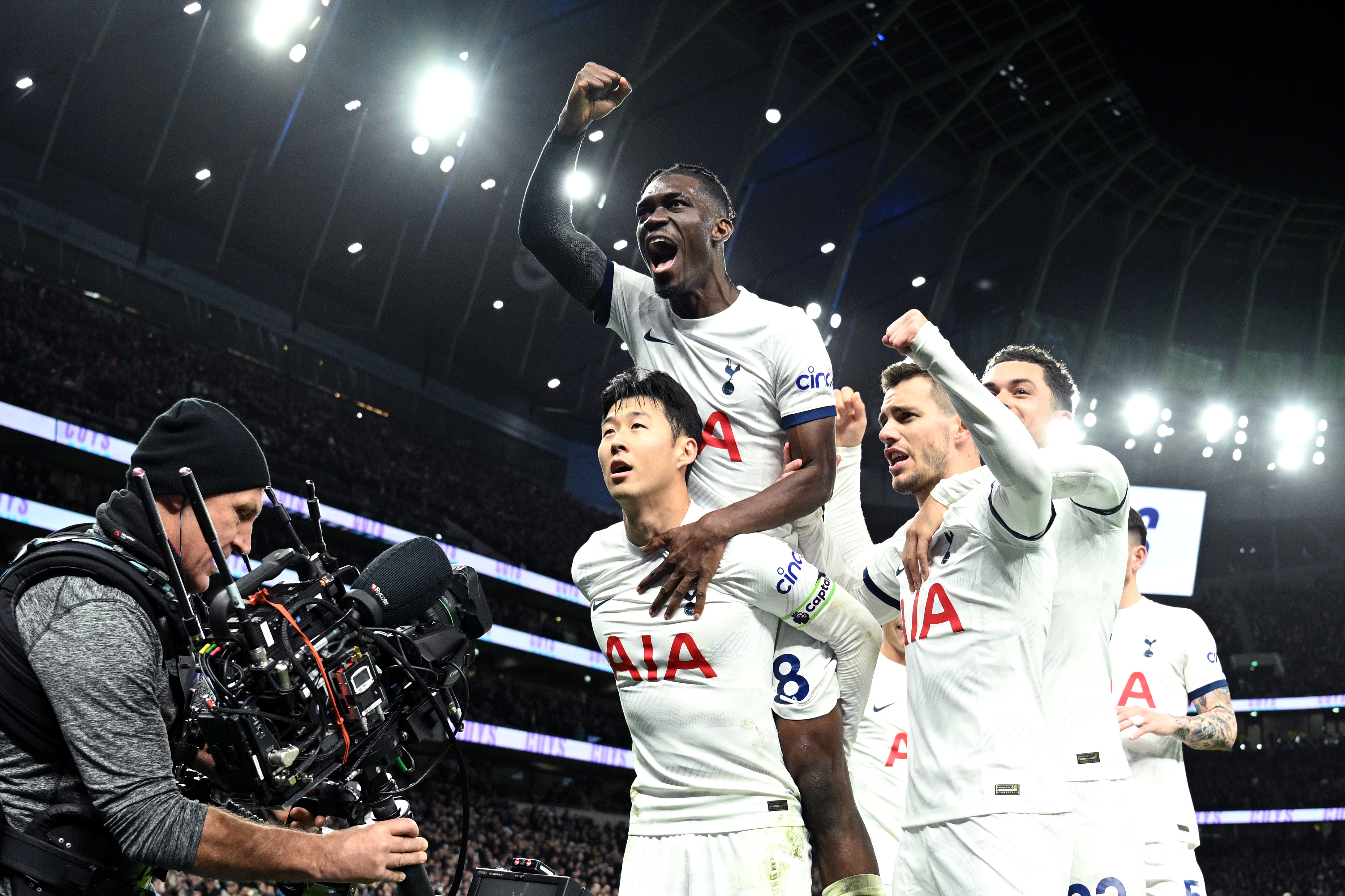
Tottenham Hotspur were founded in 1882 and began wearing their current colours – albeit initially with dark blue shirts and white shorts.
After using light blue and white half-and-half shirts for several seasons, Spurs first wore white jerseys in 1889. For six years from 1890, the club used red shirts and were even known as the Tottenham Reds, a colour associated with their north London rivals Arsenal these days. Following a couple of years in chocolate and gold, Spurs switched back to white shirts and dark blue shorts in 1898 and have stuck with that combination ever since, sometimes using all-white kits and often alternating between blue and white socks.
3. England
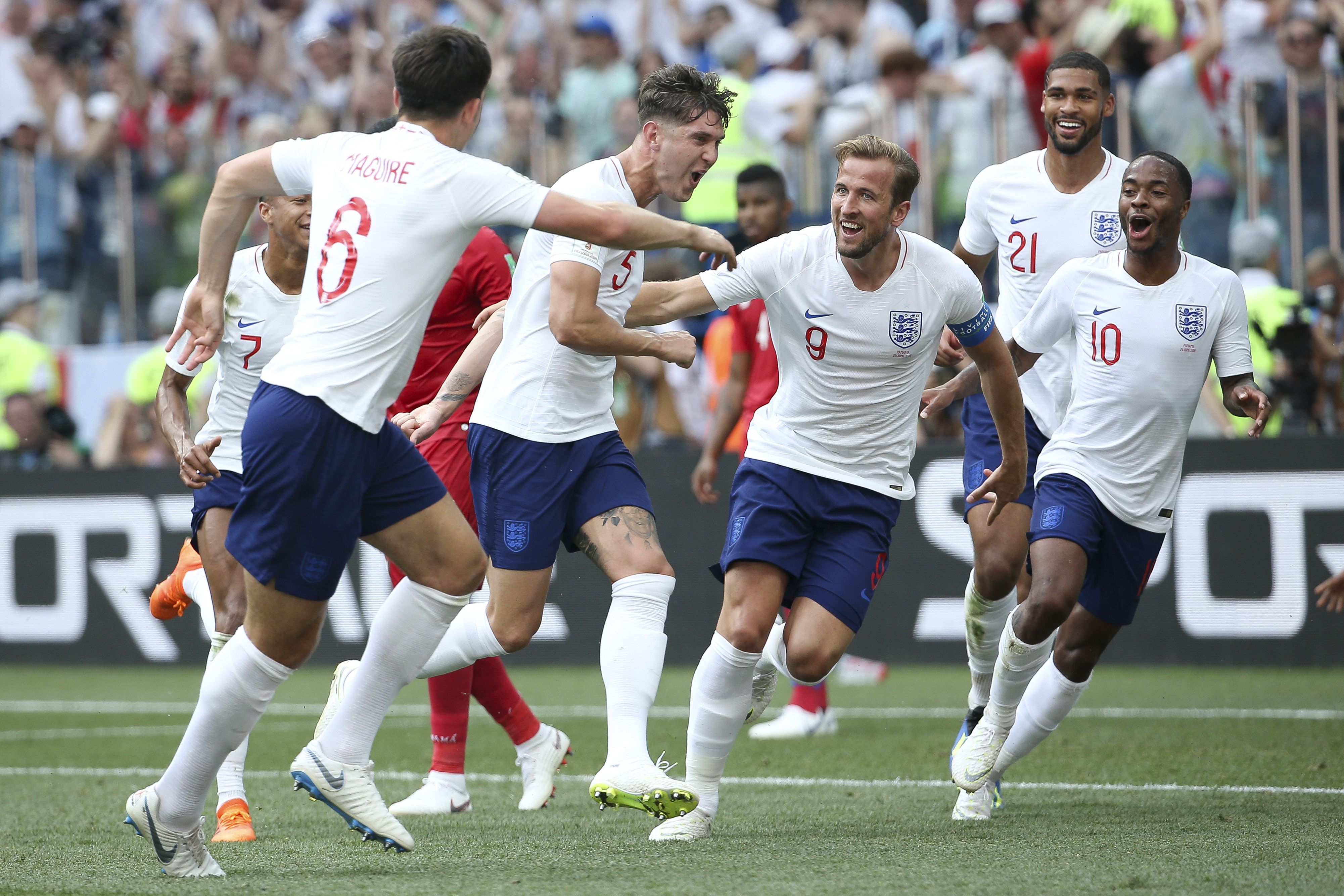
England won the 1966 World Cup final against West Germany in red shirts, but the Three Lions have traditionally worn white jerseys, with blue shorts.
It has been claimed that England switched from blue to white ahead of the first ever international match, against Scotland in 1872, to avoid a clash with the Scots' navy shirts and used cricket jerseys for the game at Hamilton Crescent in Glasgow. After that, the Three Lions wore a number of different colours, but opted for their famous white shirts and blue shorts in the late 1800s after calls from the press for a fixed uniform.
2. Germany
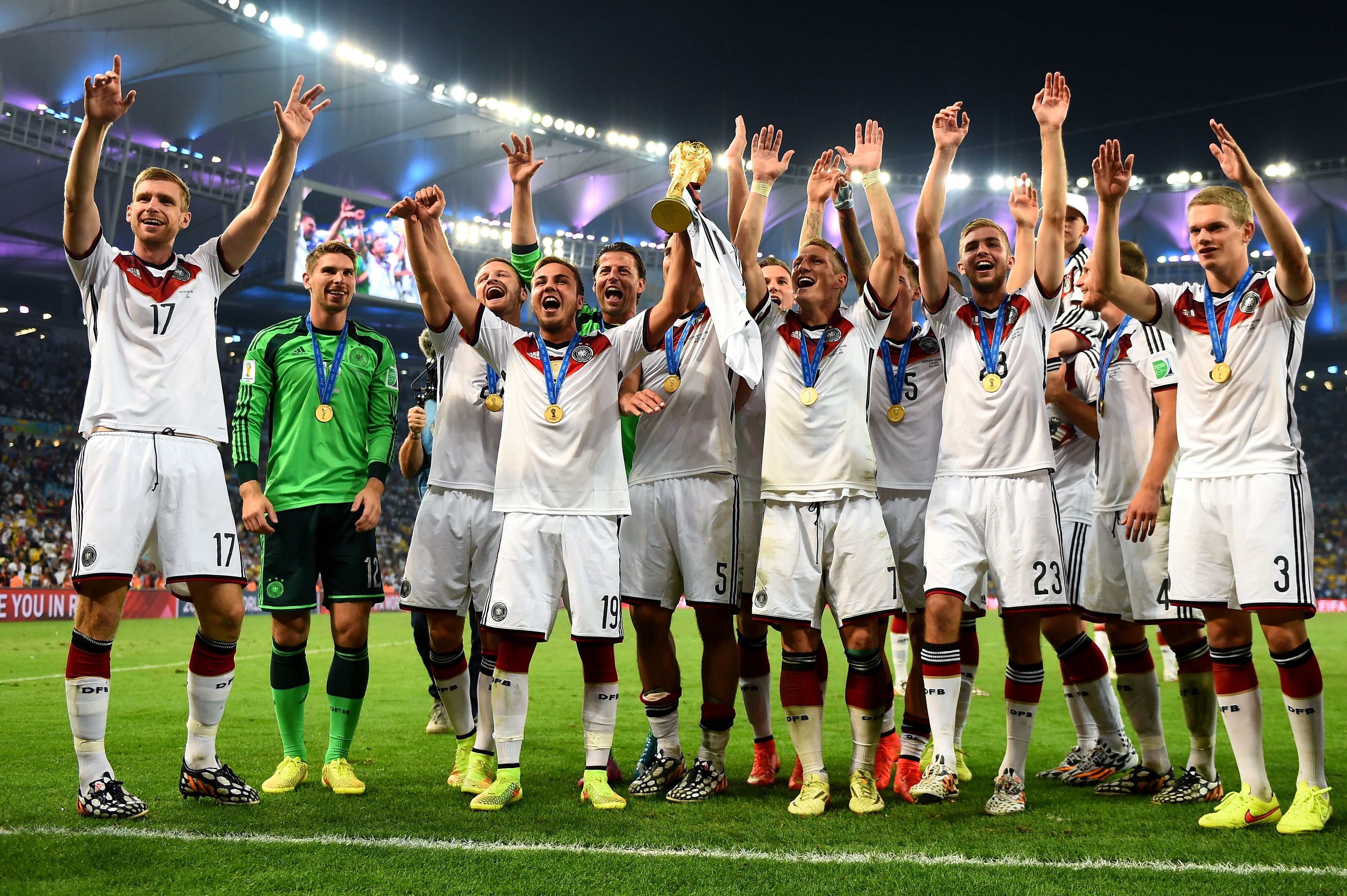
There is no white on Germany's flag, which features three horizontal bands of black, red and yellow. So why do Die Mannschaft wear white shirts?
White was the colour of the Prussian flag, a state covering much of northern Europe and which formed the German Empire when it unified the German states in 1871. Prussia had a white flag, which featured a black cross in the middle. It was later replaced by the black eagle. The German national team adopted the Prussian colours when it was formed in 1899 and still uses the black eagle on its crest today.
1. Real Madrid
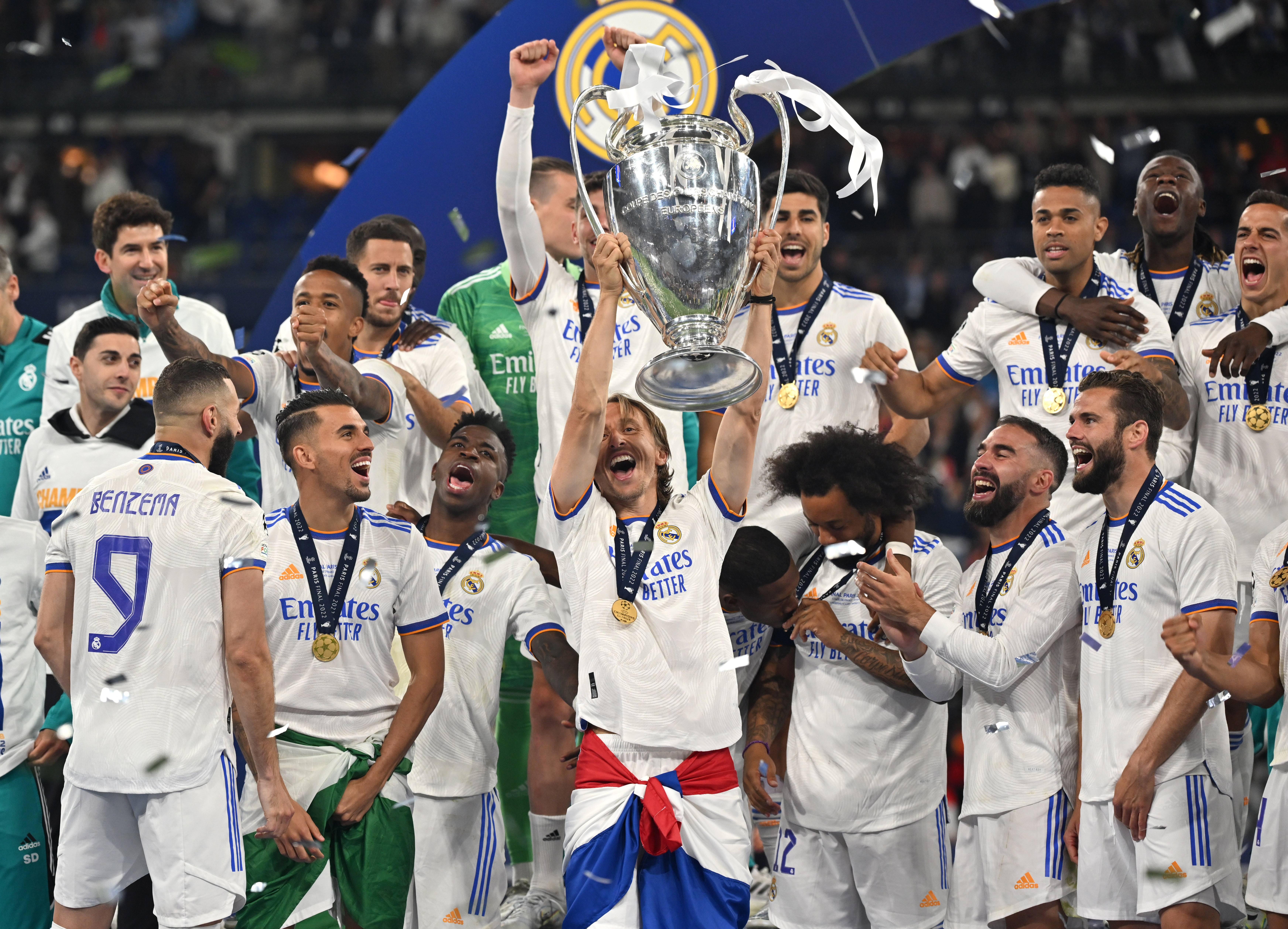
Real Madrid are arguably the world's biggest club and in the European Cup, by far the most successful side. Known as Los Blancos (the Whites) or Los Merengues (the Meringues), Madrid have worn white shirts for their entire history.
This is often said to be because two of Madrid's founding members watched amateur English club Corinthian in action on a trip to London, but there is actually scant evidence of this. Much later, Madrid did change their kit to copy the now-defunct Corinthian by adopting dark shorts and off-white jerseys in 1925. However, this was quickly scrapped after a series of poor results as it was thought to have brought bad luck. The famous all-white kit did not become a permanent fixture until the mid-1950s, with black or blue socks frequently used up until then.







